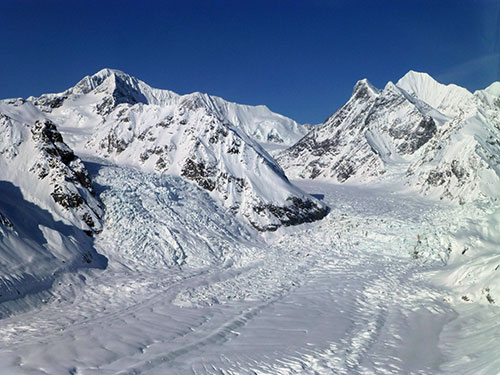
Half of Alaska’s glaciers could be gone by 2100
September 30, 2015
Researchers Matthias Huss from Switzerland and Regine Hock from the University of Alaska Fairbanks Geophysical Institute projected the contribution of all the world’s glaciers to sea-level rise by the year 2100, given three scenarios of future greenhouse gas emissions. Their paper was just published in Frontiers in Earth Sciences. Alaska is one of the largest regional contributors to future sea-level rise from glaciers. Worldwide, there are about 200,000 glaciers. Alaska has 25,000 glaciers covering an area roughly the size of Maine: 35,385 square miles.
The Susitna Glacier
Their results predict that, worldwide, glaciers will be reduced between 25 and 48 percent by the year 2100, depending on carbon dioxide emissions. This would cause a sea-level rise of between 3 and 6 inches. Alaska’s contribution to this total would be half an inch to 1 inch, even though Alaska has only about 12 percent of the world’s glaciers. In addition to the effect on sea-level rise, glaciers have a profound effect on the quantity, timing and temperature of river flow, which makes them critical to fisheries and hyroelectric power generation. Some regions of the world, including central Europe, tropical regions and western Canada, may lose 80 to 100 percent of their glacier area. These numbers do not include the ice sheets of Antarctica or Greenland, which are other large sources of melting ice. Regine Hock is a glaciologist with the UAF Geophysical Institute. Matthias Huss is with the Swiss Federal Institute of Technology in Zurich, Switzerland.
Edited by Mary Kauffman, SitNews
Source of News:
|
||
